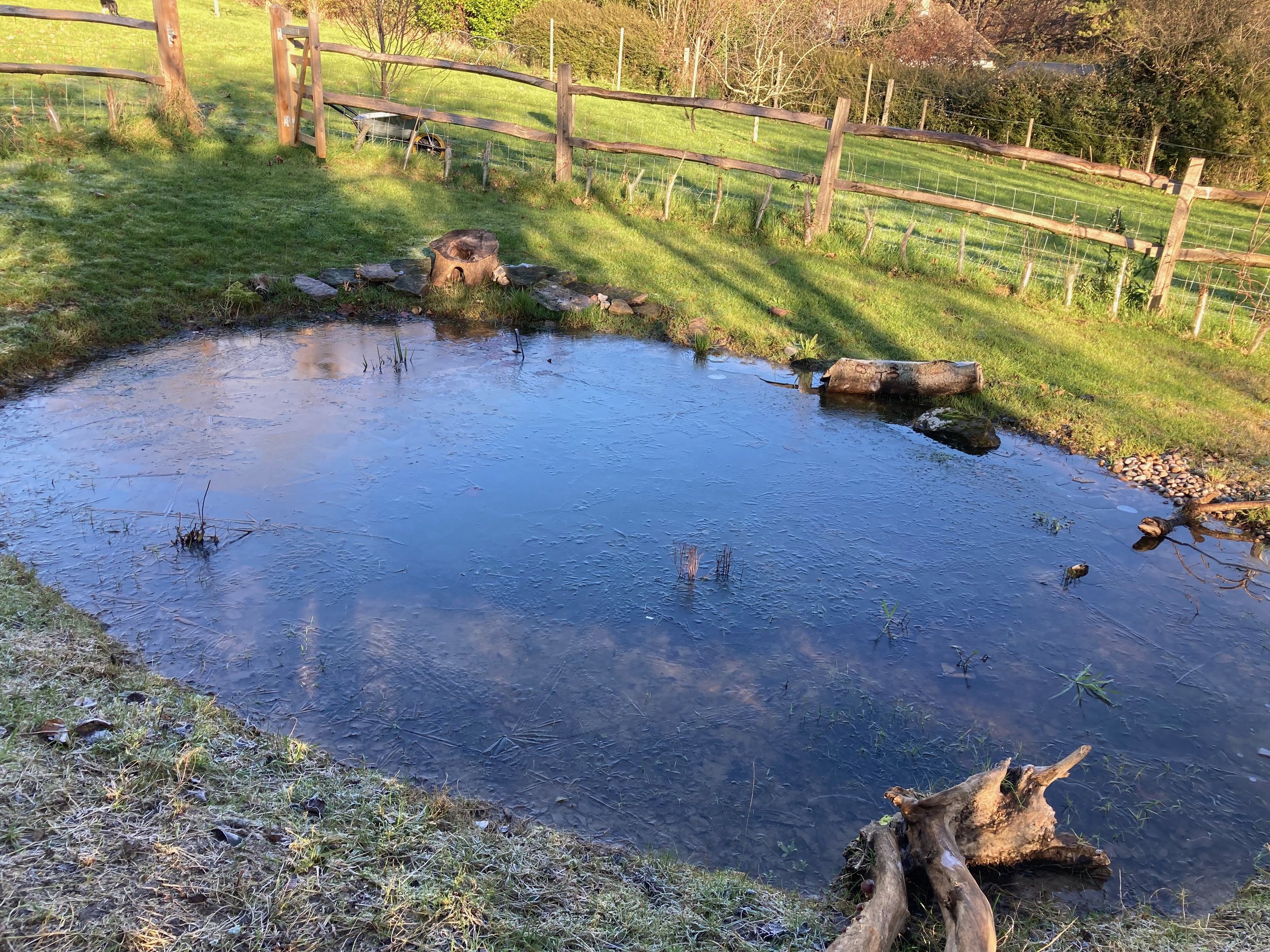Dragonflies
Dragonflies are among a special group of garden visitors, animals which look too exotic to be native to the UK. Along with other regular garden visitors such as Great Spotted Woodpeckers, Hummingbird hawkmoths and the blue butterflies, their bright colours can seem out of place in the UK. They are native though, in fact there are 46 species of Odanata (Dragonflies (Anisoptera) and Damselflies (Zygoptera)) resident in the UK, with 17 of these regularly breeding in garden ponds.
I’ve loved dragonflies since I was a small girl on a summer holiday in Scotland. Walking with my Mum we heard a very loud buzzing noise, felt a sudden fluttering breeze and a dragonfly landed on my flowery dress. My memory is that it was enormous, and quite scary with its large bulging eyes (dragonflies have the largest eyes in the insect world). Mostly though I remember the intricate lacy pattern on its impressive double set of wings.
Dragonfly identification. I don’t know which species of dragonfly that was, it was well before smartphones which these days enable us to take a picture if we’re quick enough. And then to upload the photo to an ID App such iRecord. This app will tell you what species you’ve found, it will also add that data to the local monitoring records.
The British Dragonflies Society has an excellent website with identification information for each species. Last summer my pond at Chalkhill was visited by at least 2 dragonfly and 3 damselfly species. Damselflies are generally smaller and more delicate. My favourite was the Broad bodied chaser, a rather short stubby dragonfly, the male is blue and female golden brown. I watched a lone blue male, endlessly searching, I imagined, for a female. I hope he found one in the end.
When you’ll see Dragonflies. You won’t see a dragonfly for a while, they are on the wing in the summer months, so January might seem an odd time of year to be thinking about them. It’s not though, firstly because on a cold winter day its wonderful to remind ourselves of one of the many colourful creatures we will be seeing when summer arrives. Secondly, if you have a pond in your garden, this is the perfect time of year to start thinking about making it dragonfly friendly.
Dragonflies are declining in number
In common with most invertebrate dragonfly numbers have been declining in the UK, so anything we do to provide more resources for them is important. Dragonflies lay their eggs in water including garden ponds, then after a few days the eggs hatch as nymphs. Dragonflies spend most of their life, a year or even more, as nymphs living under the water. Mature nymphs climb out of the water using tall vegetation, wait for their wings to dry and harden and then take to the air as adults. It’s important to provide the right conditions for dragonfly nymphs to emerge. Dragonflies have been around for 300 million years, one of the first winged insects to evolve. We need to do all we can to protect their habitats and ensure they are around for a lot longer.
Dragonflies eat small flies so the more wildflowers there are around a pond the better, as flies will be attracted to the wildflowers for their nectar. They also eat mosquitos so are a natural insect repellent.
So it’s all about encouraging the best types of plants around your pond, tall species for nymphs to emerge, and wildflowers to attract small insects. Native species are best.
For more information and ideas on how to rewild your garden visit www.chalkhillrewilding.co.uk




